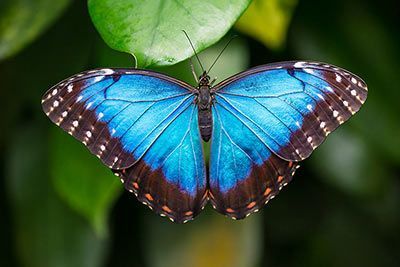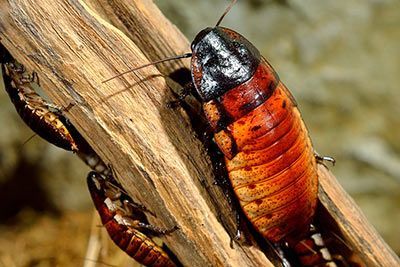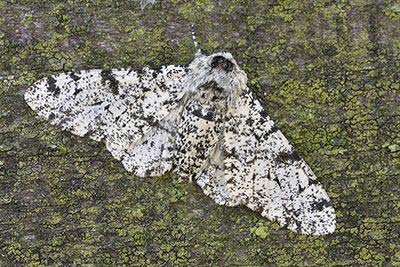Bumblebee
Bumblebee Facts
| Size | 0.3-0.9 in (8-23 mm) (body); 0.7-1.6 in (18-43 mm) (wingspan) |
| Speed | Up to 12 mph (20 km/h); up to 200 wing beats per minute |
| Weight | Unknown |
| Lifespan | 2-4 weeks (worker, drones); 1 year (queen) |
| Food | Nectar, pollen |
| Predators | Birds, rodents, reptiles, insects |
| Distribution | Europe, Asia, America |
| Habitat | Hedges, meadows, gardens, bushes |
| Order | Hymenoptera |
| Family | Apidae |
| Subfamily | Apinae |
| Scientific name | Apis mellifera |
| Characteristics | Round and furry body; peaceful |
Main Characteristics
Bumblebees are small insects that are best known for pollinating flowers, their round fuzzy bodies and their peaceful nature.
Species
There are more than 250 types of bumblebee. 36 of them live in Germany, including the buff-tailed bumblebee, the red-tailed bumblebee, shrill carder bee, early bumblebee and garden bumblebee. Just like bees and hornets, bumblebees are protected in Germany. They live in temperate climate zones (neither hot nor cold) as well as colder areas. Find out below how they deal with cold temperatures.
Anatomy and Appearance
Size and Weight
The biggest bumblebee in the world lives in Patagonia (South America). The species is called Bombus dahlbomii. It grows to 1.5 inches (4 cm) long and weighs 0.01 to 0.05 ounces (0.5 to 1.5 grams).
Furry Coat
Their furry coats keep bumblebees warm, but these insects will vibrate their muscles to reach the right temperature they need to fly - just like how we shiver when we’re cold. This warms up the bumblebee so it can fly.
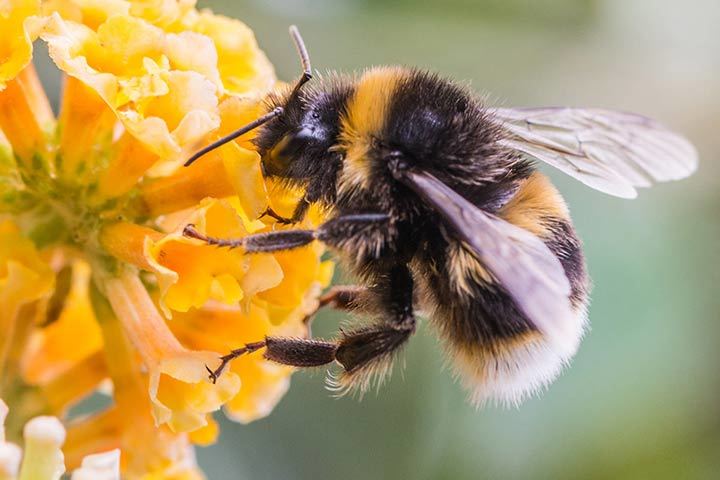
Diet
Bumblebees eat pollen. They have very fast metabolisms, so they have to eat constantly. Even when their bellies are full, they can only fly for 40 minutes before they starve.
Behavior
Can Bumblebees Sting?
Yes! Bumblebees can sting but they are very peaceful so sting very rarely compared to wasps and other bees. If they feel threatened, they will stick out their stingers and buzz loudly. Their stinger doesn’t have a barb, so they carry on living after stinging.
Abilities and Senses
How Can Bumblebees Fly?
How can an insect fly when it has such small, short wings and such a big, round body? Scientists have long wondered about this. The answer? Bumblebees don’t beat both wings at the same time, they beat them one after the other. This creates an air vortex, like a mini tornado (no kidding!). This makes sure that the wings are under less pressure than their surroundings. This sucks the bumblebee upwards. This is called the “tornado effect”! You might see air pressure used in everyday objects, e.g. suction cups. The minimum air pressure possible is a vacuum (like in space).
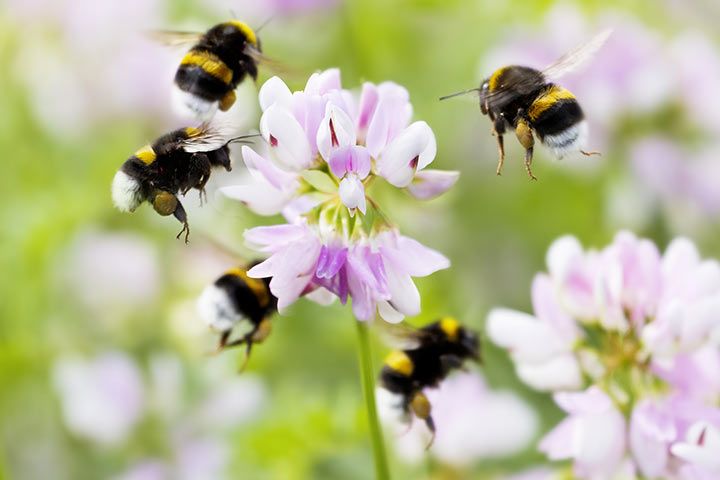
The Bumblebee Colony
A bumblebee colony can contain up to 600 animals, depending on the species. This is considerably smaller than bee colonies, which can have 10,000 to 80,000 animals. Most bumblebees are workers. There are also males (called drones) and young queens.
In spring, the queen creates a wax cell with “bee bread” (a mixture of nectar and pollen) and eggs. These are incubated at 38 degrees Celsius until the larvae hatch. These bite the wax cells open and begin to feed. The larvae pupate and turn into “finished” bumblebees. This metamorphosis takes around 10 days.
The Bumblebee Nest
Where Do Bumblebees Build Their Nests?
Bumblebees build their nests in small holes in the ground, moss, hollow tree trunks or abandoned bird nests. In summer, it can get really hot in a bumblebee nest. But these fluffy little critters know what to do: to cool down the nest and get some fresh air in, they stand at the nest entrance and flap their wings!
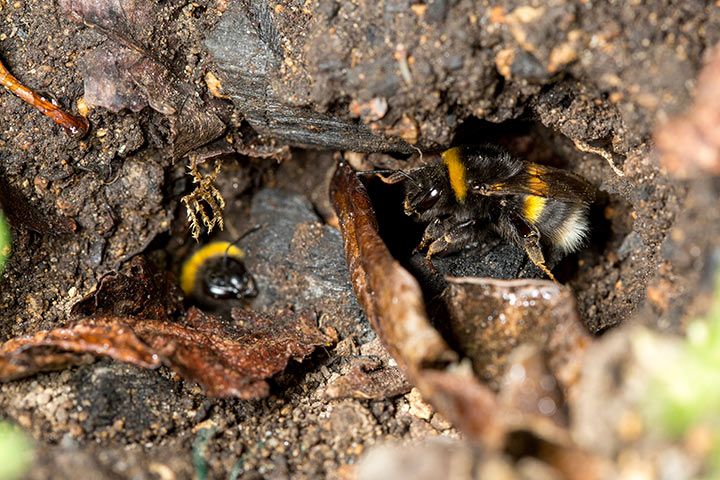
Life Expectancy
A bumblebee queen lives for around 12 months, a worker lives for 2 to 3 weeks and a drone lives for about four weeks. The queen spends most of her time hibernating, then rebuilds the colony in spring. In summer, young queens hatch. The “old” queen dies in late summer along with the rest of her colony. In fall, the new queens look for somewhere to spend winter. Out of 100 young queens, only three animals usually make it to the next spring to start a new colony.
Enemies and Threats
Why Do You See Dead Bumblebees in Late Summer?
Lots of plants wither and die in late summer, so it becomes increasingly hard to find enough nectar and pollen. Dead bumblebees are often found under linden trees. This tree’s flowers have so little nectar that the animals use up more energy flying around from flower to flower than they can recover. Wild bees and bumblebees especially struggle with barren, plastered and stony rockeries in our front yards.
Importance for the Ecosystem
Why are bumblebees so important for nature? We often only consider honey bees when it comes to pollinating plants. But wild bees and bumblebees are important for a healthy ecosystem as they pollinate a wider variety of plants. Bumblebees also fly around when temperatures reach 6 degrees Celsius, while honeybees don’t come out until it’s 10 degrees Celsius. Bumblebee queens even emerge from 2 degrees Celsius.
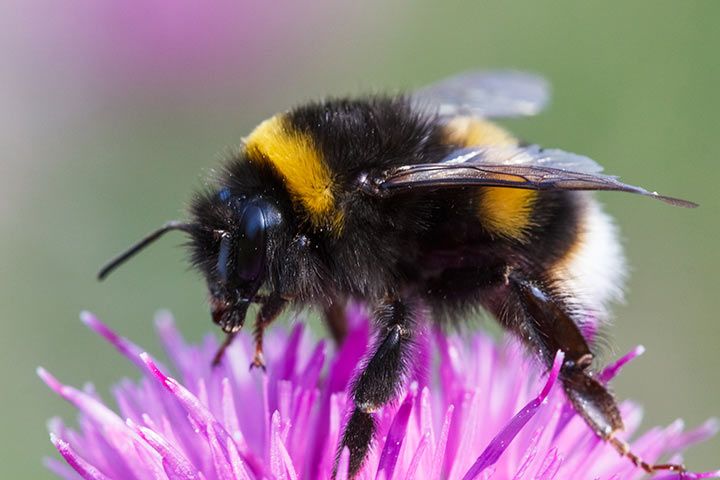
Helping Bumblebees
1. Feeding bumblebees
Young bumblebee queens sometimes struggle to find enough food after winter. If you see a weakened bumblebee, dissolve half a teaspoon of sugar in lukewarm water and offer it to the bumblebee in a spoon.
2. Wildflowers in your garden
Wild plants have lots of nectar in their flowers, and this is very important to bumblebees. Watch out: not all flowers make enough nectar. Geraniums, for example, have lots of flowers but not a lot of nectar. It’s best to find out more about “bee-friendly” plants before buying any.
3. Put out a bumblebee hotel
Bumblebees are happy to use bug hotels as nests. You can buy these at a garden center or make one yourself. The NABU (Nature and Biodiversity Conservation Union) has a tutorial.
4. Do not use pesticides
Insect repellents are often used to drive pests away from the pretty flowers on your balcony or in the garden. However, these agents are very bad for the animals. They not only damage the body and the senses, but also cause changes in their genome. Fewer bumblebees are born, especially queens.
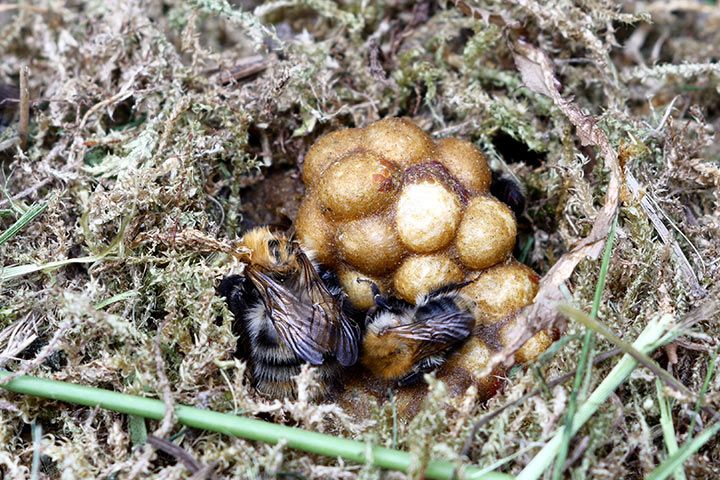
The Bumblebee Is Related To:
Animals in the Same Biome:
- European Hare
- Great Spotted Woodpecker
- Hedgehog
- Honey Bee
- Magpie
- Microbat
- Ladybug
- Mole
- Mouse
- Rabbit
- Red Fox
- Shrew
- Wasp
- Find Out More:
- Bee Facts
- Bee or Wasp – What's the Difference?
- Wasp Facts









